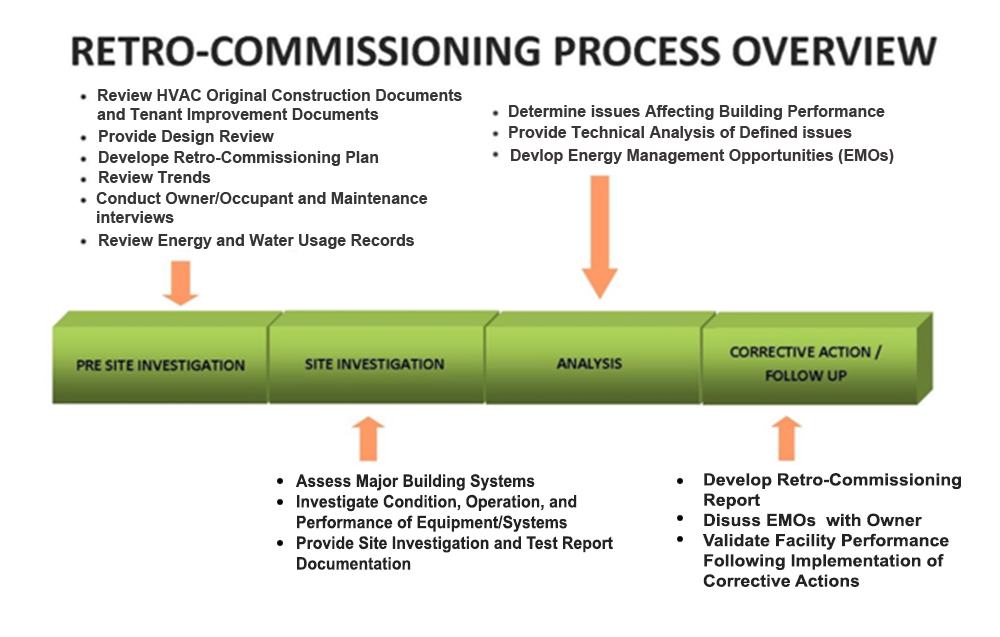
The Solution to Underperforming Building Automation Systems
What is Retro-Commissioning?
Retro-commissioning is an application of the commissioning process to existing buildings. Retro-commissioning is a process that seeks to improve how building equipment and systems function together. Depending on the age of the building, retro-commissioning can often resolve problems that occurred during design or construction, or address problems that have developed throughout the building’s life. In all, retro-commissioning improves a building’s operations and maintenance (O&M) procedures to enhance overall building performance.
All forms of building commissioning share the same goals: to produce a building that meets the unique needs of its owner and occupants, operates as efficiently as possible, provides a safe, comfortable work environment, and is operated and maintained by a well-trained staff or service contractor.
What are the benefits of Retro-Commissioning?
Everyone benefits from retro-commissioning. For owners, retro-commissioning will lower the building operating costs that can increase net operating income. Building managers notice fewer occupant complaints and increased ability to manage systems. Building staff receive training and improved documentation, and building occupants are more comfortable.
Cost Savings: Retro-commissioning can improve significant cost savings in existing buildings. Savings vary depending on the building type, its location, and the scope of the retro-commissioning process. A comprehensive study shows average cost savings in the following ranges:
| Description | Range of Values |
| Value of Energy Savings | $0.11 – $0.72/sqft |
| Value of Non-Energy Savings | $0.10 – $0.45/sqft |
What is the Difference Between Energy Audits and Retro-Commissioning?

An ASHRAE Level I or Level II energy audit is like a snapshot of a building, whereas retro-commissioning (RCx) is more like a video of the building. If you have an energy audit performed in the summer, the auditor should be able to identify air conditioning problems, but may not be able to identify heating problems, as the heating equipment may not have been running in the summer.
RCx is more focused on how the equipment operates and how the equipment responds to changes in ambient conditions or occupancy. Trend logs and/or data loggers are used for recording temperatures, pressures, power, etc. hourly or in 15-minute intervals. This data is then analyzed to identify problems in how the equipment is working. RCx also typically involves functional testing, which is a systematic way of testing how the equipment responds to changes in ambient temperature, occupancy or schedule. Functional testing might answer questions such as, what temperature chilled water is being provided when the outside air temperature is 30°F, 40°F, etc. The inputs to the controls are overridden or simulated in order to document the system’s response.
When implemented and energy audit focuses on saving energy. Many of these measures involve purchasing and installing new capital equipment, such as new chillers, pumps or boilers. RCx focuses on how the existing equipment is controlled. RCx measures are mostly repairing, recalibrating and reprogramming controls and control devices such as temperature sensors and damper actuators. RCx measures are typically inexpensive to implement and typically offer simple paybacks of two years or less.
An RCx study is typically more expensive than an energy audit, however, when you combine the cost of the RCx study with the cost to implement the measures identified in the report, you will find that RCx is typically less expensive than energy audits, as energy audit measures often have longer paybacks.


